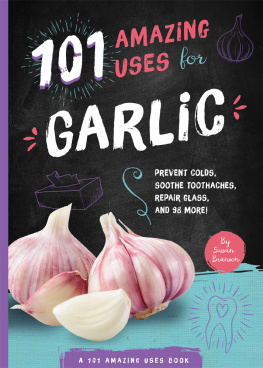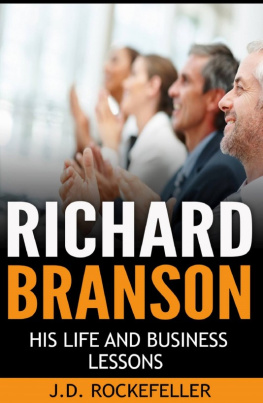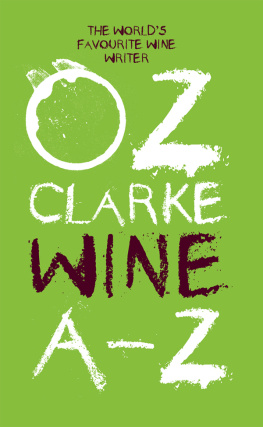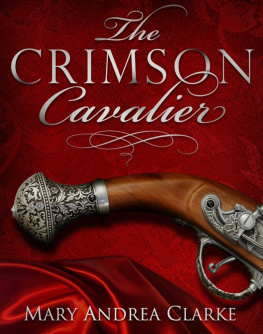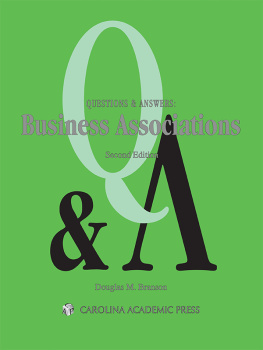Copyright 2008 University of Pennsylvania Press
All rights reserved. Except for brief quotations used for purposes of review or
scholarly citation, none of this book may be reproduced in any form by any
means without written permission from the publisher.
Published by
University of Pennsylvania Press
Philadelphia, Pennsylvania 19104-4112
Printed in the United States of America on acid-free paper
10 9 8 7 6 5 4 3 2 1
Library of Congress Cataloging-in-Publication Data
Branson, Susan.
Dangerous to know : women, crime, and notoriety in the early
republic / Susan Branson.
p. cm.
Includes bibliographical references and index.
ISBN: 978-0-8122-2187-9
1. Carson, Ann Baker. 2. Clarke Mary, fl. 18151838. 3. Women
PennsylvaniaPhiladelphiaBiography. 4. Female offendersPennsylvania
PhiladelphiaBiography. 5. Women authors, American19th century
Biography. 6. Philadelphia (Pa.)Social conditions19th century.
7. Sex roleUnited StatesHistory19th century. 8. CrimeSocial
aspectsUnited StatesHistory19th century. 9. FameSocial aspects
United StatesHistory19th century. 10. Social statusUnited States
History19th century. 1. Title.
HQ1439.P5B73 2008
305.48 9623092274811dc22 2008009040
For KaitlinPreface
In the early spring of 1822 two women, just released from Philadelphias Walnut Street prison on a robbery charge, hailed a passing carriage. They drove from boardinghouse to boardinghouse throughout the city. Though the women had sufficient money to rent a room, they were denied admittance everywhere. In a final attempt to find lodging for his passengers, the coachman took them to a brothel. But even the madam of a house of prostitution refused them entry. The worried coachman declared, They must be a pair of she devils when even a brothel refused them admittance. Finally, someone did agree to take the infamous Ann Carson and her companion, Mrs. Stoops: Captain Parrish, who ran a gambling house on South Third Street. Even there, Carson was admitted only because Parrish cared more for her money than for his reputation; she and the more affluent Mrs. Stoops paid for a weeks lodging in advance, ordered oysters and punch, and conspicuously displayed their cash. Shortly after this episode, Ann Carson contacted Mary Clarke, a respectable woman who earned her living by her pen. She asked Clarke to ghostwrite her autobiography. Clarke not only agreed to write Carsons book, she also invited Ann Carson to live in her home. Seven months later, The History of the Celebrated Mrs. Ann Carson rattled Philadelphia society and became one of the most scandalous, and eagerly read, memoirs of the age. This gripping yarn told the story of a woman who tried to rescue her lover from the gallows (by blowing up the Walnut Street prison, if necessary), attempted to kidnap the governor of Pennsylvania, and chose a life of crime over one of genteel poverty. It entertained readers with accounts of love, murder, and criminal daring.
Dangerous to Know is a paired history of Carson and Clarke. An intertwined biography relates episodes in each womans life that highlight the strategies these women used to succeed in a society that constrained womens activities and ambitions.
Ann Baker was married at age fifteen because her parents were too impoverished to keep her. For twelve years, she led a tumultuous life with John Carson, an irresponsible sea captain whose unreliable income forced her to seek work. She opened a small shop, which brought her success. And Johns long absences gave her a measure of personal independence; unfettered by her husbands authority, Ann Carson sought pleasure in several adulterous relationships. But a murder one cold January night in 1816 propelled Ann Carson irrevocably into the criminal underworld of robbers, counterfeiters, and conmen. She embraced this dangerous life; though it was rife with tenuous alliances and ever-present risk, Carson found the economic and personal freedom that had previously eluded her.
Carsons ghostwriter was no less daring. Mary Clarke pursued dangerous associations and wrote scandalous exposs based on her experiences. Like Carson, Clarke was forced to become her familys breadwinner. Also like Carson, she found respectable workas a playwright and journalist. But Clarke walked a fine line between respectability and notoriety. Her collaboration with Carson was just the beginning of a series of publications that supplied readers with sex, scandal, and murder. Clarke immersed herself in the world of criminals and disreputable actors, and she used her acquaintance with this demimonde to shape a career as a sensationalist writer.
The activities of Mary Clarke and Ann Carson seem far removed from prescribed female behavior in early nineteenth-century America. Both women deliberately violated gender conventions and courted publicity. Why would Clarke jeopardize her reputation, and hence her livelihood, through associations with a criminal? And why would Carson, already on a downward social and economic spiral, wish to publicize her infamy rather than disguise it? The answers lie in the two major sources for this study: The History of the Celebrated Mrs. Ann Carson (1822) and The Memoirs of the Celebrated and Beautiful Mrs. Ann Carson (1838). The first is Carsons autobiography (written with Mary Clarke). The second is Clarkes continuation of Carsons life story. The books relate actual events in both womens livestheir family circumstances, work, and Carsons trials and incarcerations. But Carson and Clarke are unreliable narrators. Ann Carson and Mary Clarke used their writings, and manipulated their readers, to further their own ends.
Few people know the histories of these two women, who did extraordinary things for their time. Yet their circumstances must have been familiar to a large group of people: middling women, fallen on hard times, who struggled to keep themselves afloat. Of course, none used the methods that Ann Carson did. And few women were in a position to be a professional author like Clarke. These two women were highly conscious (and critical) of the social norms of their time. They had an accurate sense of what was possible, what was not, and how they could get what they wanted given the constraints under which they lived. Both women deliberately challenged gender conventions because they could not afford to abide by them; both women devised ways to do what they wanted despite social norms. For Carson, this meant open violation of convention. Clarke, however, worked within the system to circumvent it. Regardless of their methods, each woman was dangerous to know: Carson because she got other people into trouble as well as herself and Clarke because she wrote scandalous accounts of the lives of acquaintances and friends. David C. McCullough has remarked that no harms done to history by making it something someone would want to read. My hope is that readers will find the unique experiences of these two women intriguing, and at the same time come away with a more nuanced perspective on the ideas, assumptions, and prejudices about American women in the early nineteenth century.




